Adelaide Pasta: Exploring 5 Irresistible Pasta Dishes
Pasta, the epitome of comfort food, has found its way into the hearts and kitchens of people worldwide. Originating from Italy, this versatile staple has been adapted and embraced in various cuisines, offering endless possibilities for culinary creativity. From simple yet satisfying classics to elaborate gourmet creations, pasta dishes hold a special place in the gastronomic world. Let’s delve into the artistry of pasta and explore five irresistible pasta dishes in Adelaide that celebrate its essence.
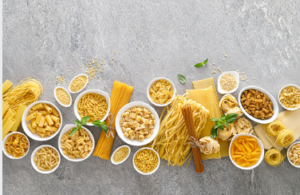 1. Spaghetti Carbonara: A Classic Indulgence
1. Spaghetti Carbonara: A Classic Indulgence
Spaghetti Carbonara embodies simplicity at its finest, featuring a delectable combination of pasta, eggs, cheese, pancetta, and black pepper. This timeless Roman dish is a celebration of basic yet bold flavours, where the richness of eggs and cheese coats each strand of perfectly cooked spaghetti while the crispy pancetta adds a satisfying crunch. The key lies in achieving the delicate balance of creamy texture without scrambling the eggs, resulting in a silky sauce that clings to the pasta. Garnished with a sprinkle of freshly ground black pepper and grated Pecorino Romano or Parmigiano-Reggiano cheese, Spaghetti Carbonara exemplifies the beauty of uncomplicated elegance.
2. Penne alla Vodka: A Luxurious Indulgence
Penne alla Vodka is a luxurious and creamy pasta dish that marries the tanginess of tomatoes with the richness of cream and the subtle warmth of vodka. Originating in Italy and popularized in the United States, this decadent creation features al dente penne pasta enveloped in a velvety sauce made from tomatoes, heavy cream, vodka, garlic, and crushed red pepper flakes. The vodka not only enhances the flavour of the tomatoes but also helps to release their essence, resulting in a harmonious blend of sweet and savoury notes. Finished with a sprinkle of fresh basil and grated Parmesan cheese, Penne alla Vodka is a sumptuous indulgence that tantalizes the taste buds and leaves a lasting impression.
3. Lasagna Bolognese: A Hearty Comfort
Lasagna Bolognese is the ultimate comfort food, showcasing layers of tender pasta sheets, rich Bolognese sauce, creamy béchamel, and gooey melted cheese. Originating from the Emilia-Romagna region of Italy, this iconic dish is a labour of love, requiring patience and precision to assemble its intricate layers. The Bolognese sauce, made with a combination of ground meat, tomatoes, onions, carrots, celery, and wine, infuses each bite with hearty flavour and comforting warmth.
4. Linguine alle Vongole: A Taste of the Sea
Linguine alle Vongole offers a tantalizing taste of the sea, featuring tender linguine pasta tossed with fresh clams, garlic, white wine, parsley, and chilli flakes. Hailing from the coastal regions of Italy, this exquisite dish is one of the best pasta dishes in Adelaide that celebrates the bounty of the ocean with its simple yet sophisticated flavours. The salty sweetness of the clams pairs beautifully with the aromatic garlic and fragrant white wine, creating a sauce that is both delicate and robust. Each twirl of pasta captures the essence of the sea, while the hint of heat from the chilli flakes adds a delightful kick.
5. Ravioli di Zucca: A Taste of Autumn
Ravioli di Zucca, or Pumpkin Ravioli, is a delectable dish that heralds the flavours of autumn with its delicate parcels of pasta filled with creamy roasted pumpkin, Parmesan cheese, and aromatic spices. Originating from Northern Italy, this seasonal delight captures the essence of fall with its warm and comforting taste. The velvety pumpkin filling, subtly sweet and fragrant, is encased in tender pasta pockets that melt in the mouth with each bite. Drizzled with a sage-infused butter sauce and garnished with toasted walnuts and grated Parmesan cheese, Ravioli di Zucca is a culinary ode to the harvest season, evoking memories of crisp air, golden foliage, and gatherings around the table.
In conclusion, pasta dishes in Adelaide are a celebration of culinary creativity, offering endless possibilities for flavour exploration and artistic expression. Whether it’s the timeless elegance of Spaghetti Carbonara, the luxurious indulgence of Penne alla Vodka, the hearty comfort of Lasagna Bolognese, the irresistible taste of Linguine alle Vongole, or the seasonal delight of Ravioli di Zucca, each dish tells a story and invites diners on a journey of sensory delight. So next time you’re craving a taste of Italy or simply seeking comfort in a bowl, remember the artistry of pasta and savour every delicious moment. Buon appetito!
 Experience the Orewa Beach lifestyle in a spacious terraced home with a private outdoor area. Spend your days relaxing, chatting with friends or enjoying local bush walks. For more information about the
Experience the Orewa Beach lifestyle in a spacious terraced home with a private outdoor area. Spend your days relaxing, chatting with friends or enjoying local bush walks. For more information about the 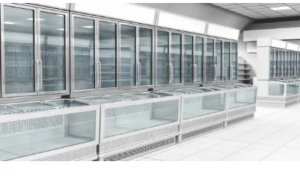 The concept of refrigeration dates back to ancient times when ice and snow were used to preserve food. However, it was only in the 19th century that refrigeration technology began to advance significantly. The invention of the first commercial ice-making machine in the 1850s marked the beginning of a new era. As industries expanded and urbanization increased, the need for reliable refrigeration systems became apparent.
The concept of refrigeration dates back to ancient times when ice and snow were used to preserve food. However, it was only in the 19th century that refrigeration technology began to advance significantly. The invention of the first commercial ice-making machine in the 1850s marked the beginning of a new era. As industries expanded and urbanization increased, the need for reliable refrigeration systems became apparent. Comfort
Comfort A garden designer brings a fresh pair of eyes to the design process and can offer ideas that aren’t immediately apparent from your vision. They will also have experience dealing with the local climate, soil and plantings that are most appropriate for your location – ensuring your garden is designed to be easy to maintain, low risk of disease or damage, and will thrive over time.
A garden designer brings a fresh pair of eyes to the design process and can offer ideas that aren’t immediately apparent from your vision. They will also have experience dealing with the local climate, soil and plantings that are most appropriate for your location – ensuring your garden is designed to be easy to maintain, low risk of disease or damage, and will thrive over time.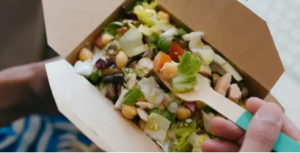 Manufacturers of plant-based packaging must comply with stringent regulations for food safety. They must submit critical data points to the FDA and perform a series of tests before using this material for food. For more information about the
Manufacturers of plant-based packaging must comply with stringent regulations for food safety. They must submit critical data points to the FDA and perform a series of tests before using this material for food. For more information about the 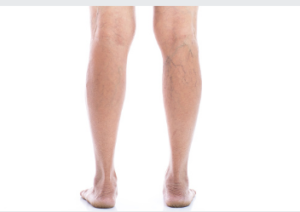 Most private health insurance providers in Australia have some form of coverage for this treatment, including various hospital treatments. The coverage levels are typically broken down into tiers, with bronze or higher usually covering the costs of most hospital treatments. You must check with your health fund about what specific varicose vein removal treatment they cover and how much you must pay out of pocket.
Most private health insurance providers in Australia have some form of coverage for this treatment, including various hospital treatments. The coverage levels are typically broken down into tiers, with bronze or higher usually covering the costs of most hospital treatments. You must check with your health fund about what specific varicose vein removal treatment they cover and how much you must pay out of pocket. Mirrors are practical design tools that work in both indoor and outdoor spaces. They can amplify greenery, especially in front of lush gardens or bushes. They can also create a feeling of depth in a small space. However, they should not be placed near shrubs and plants that the reflection could damage.
Mirrors are practical design tools that work in both indoor and outdoor spaces. They can amplify greenery, especially in front of lush gardens or bushes. They can also create a feeling of depth in a small space. However, they should not be placed near shrubs and plants that the reflection could damage. We have specialised expertise in speech, language, cognitive communication and oral/feeding/swallowing disorders. We offer a multi-disciplinary approach with on-site occupational therapy services. For more
We have specialised expertise in speech, language, cognitive communication and oral/feeding/swallowing disorders. We offer a multi-disciplinary approach with on-site occupational therapy services. For more 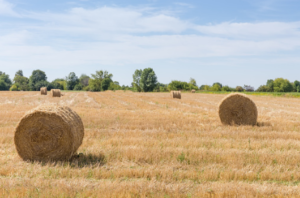 Always check the real runnage on the twine as compared to its type number. It will give a much better indication of the twine’s actual strength. For
Always check the real runnage on the twine as compared to its type number. It will give a much better indication of the twine’s actual strength. For